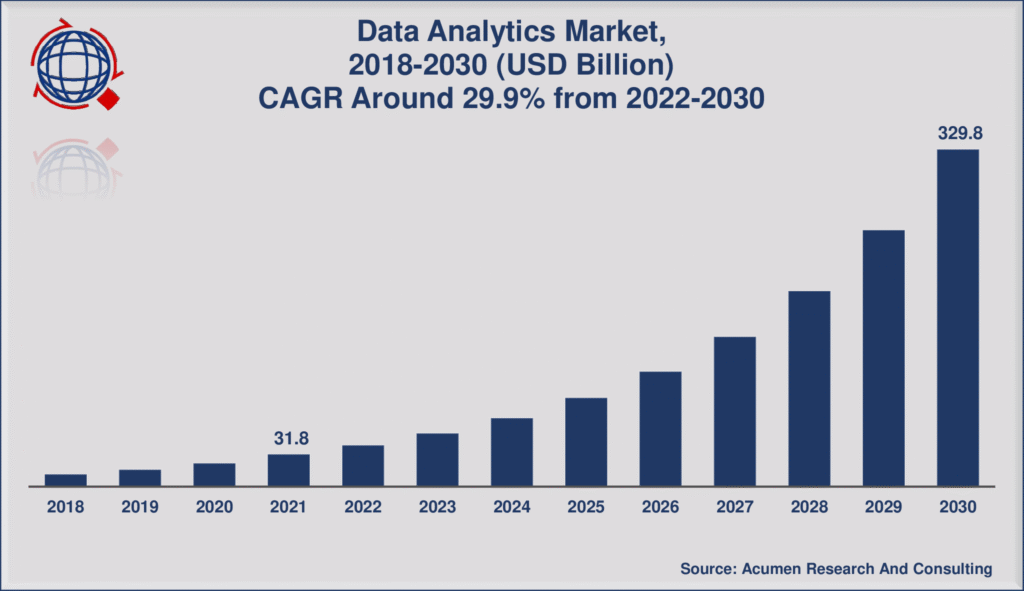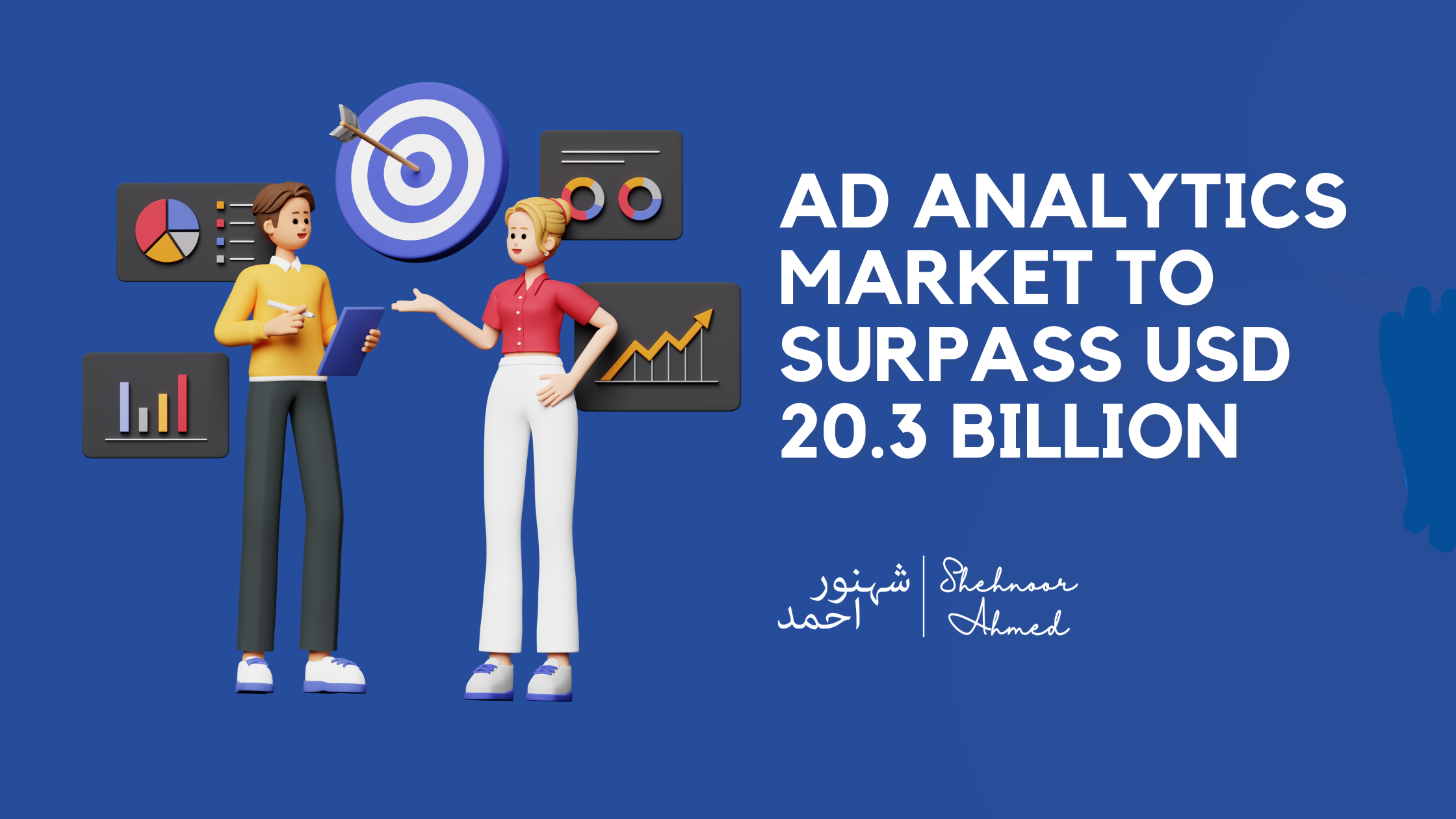Why Ad Analytics Isn’t Optional: It’s a Must Now
In today’s hurry-up world of online advertising, placing ads without knowing their effect is a little like navigating without a compass. With companies throwing budgets into Google, Meta, YouTube, and a whole bunch of other sites, seeing where that money is being spent, and what it’s generating,is more critical than ever. This is where ad analytics really matters. It’s the process of gathering and analyzing advertising information to know what is going right and what is going wrong. With digital marketing getting more crowded and performance-driven, analytics is no longer a luxury item, it’s a necessity.
Based on a latest research conducted by Future Market Insights (FMI), the global ad analytics market is expected to reach USD 20.3 billion by 2035, reflecting a huge trend towards data-driven marketing.
Why is the Demand for Ad Analytics Increasing So Rapidly?

Currently, marketers are under intense pressure to prove their budgets. Whether it’s a small business or a global company, it all comes down to the same priority: spend smarter, not more.
Important Drivers Behind the Growth
Multiple Ad Platforms
Brands now advertise on search engines, social networks, apps, streaming media sites, and websites. Without analytics, it is impossible to manage them efficiently.
Increasing Ad Prices
As competition grows, companies must make each dollar count towards measurable results.
Requirement for Real-Time Performance Measurement
Marketers desire to view not only clicks and impressions but conversions, sales, and ROI.
Improved, Quicker Decisions
Data enables companies to halt underperforming campaigns and scale the performing ones, saving time and resources.
Simply put, ad analytics brings light to complexity, empowering companies to better navigate today’s busy digital world.
Also read: Why Consumer Behaviour Data Is the Future of Marketing
How Ad Analytics Drives Marketing Effectiveness
Companies that use analytics effectively gain a definitive competitive advantage. Here’s how it brings value:
- Tracks behavior across devices and platforms
- Measures return on investment by connecting ad spend to results
- Pinpoints top-performing creatives, formats, and audiences
- Enables continuous A/B testing and campaign optimization
- Saves wasted spend by identifying poor-performing ads early
Example: A fashion brand may discover Instagram Reels generate twice the sales as Facebook Ads. With analytics, they can reallocate budgets accordingly, maximizing impact without additional spend.
What’s Driving the Projected Growth?
A few key trends are driving the growth of ad analytics tools:
1. Programmatic Advertising
Automated advertisement purchasing is increasing. Programmatic platforms rely intensively on performance metrics to bid on placements in real time.
2. Multi-Device Marketing
Shoppers toggle between phones, tablets, and desktops. Advertisers need to capture the entire user experience, not discrete interactions.
3. Results Over Vanity
Likes and shares won’t pay the mortgage. Decision-makers today expect conversions, sign-ups, and qualified leads, and they expect to see the proof.
4. Global Increase in Digital Spending
As brands increase investments in digital all around the globe, the need for precise measurement increases with it.
Market Opportunities: Not Just Big Brands
Ad analytics growth isn’t limited to big tech companies or large businesses. Small and medium-sized businesses (SMBs) are actually gaining a lot from it.
Real-World Use Cases
- Grocery stores monitor which items convert most often via paid advertising.
- Local service businesses track what keywords drive phone calls or fill-out forms.
- Streaming sites measure viewer interaction with ads inserted in-stream.
- Mobile app developers apply analytics to measure user interaction with app ads.
This data democratization ensures any company, big or small, can leverage analytics to become smarter and grow faster.
What’s Keeping Some Companies Back?
Despite the advantages, some businesses continue to find it difficult to derive maximum value out of ad analytics. The most common issues are:
- Data Overload: Too much data, but no clue where to begin
- Disconnected Platforms: Non-integrated tools make insights more difficult to assemble
- Privacy Concerns: GDPR, CCPA, and other privacy regulations add complexity
- Lack of In-House Skills: Few organizations have the skillset to analyze or respond to the data
The good news? These silos can be bridged with the correct strategy, tools, and training.
Expert Advice from Shehnoor Ahmed: “Start Simple, Stay Focused”
“Most companies already have the data, they just need to begin using it the correct way. You don’t have to monitor everything. Look at the numbers that are tied to your goals.”
,Shehnoor Ahmed, Digital Strategy Consultant
Shehnoor advises beginning small, selecting metrics that align with your business objectives, like leads, income, or sign-ups, and monitoring persistently.
Shehnoor’s Pro Tips:
- Use tools with integral tools such as Google Ads, Meta Ads Manager, or LinkedIn Campaign Manager
- Establish specific campaign objectives prior to launch
- Insist on data review every week, not after the month
- Educate your team on which metrics truly make a difference
- Always let data inform decisions, not intuition
Where Analytics Is Having an Impact
Examples of companies doing analytics well:
- A private clinic tracks how many appointment requests are coming in from Google Ads.
- A fashion retailer finds out which product photos are generating the most Instagram interaction.
- A technology startup discovers what headlines work best on mobile via A/B testing.
Not these are not big-budget campaigns, these are intelligent campaigns, informed by data.
What’s Next for Ad Analytics?
The development of online advertising isn’t slowing down, and neither is analytics. In the coming months and years, look for:
- More real-time dashboards to enable marketers to quickly shift course
- Privacy-first platforms that respect user data without sacrificing insights
- Easier-to-use analytics interfaces optimized for non-technical users
- Greater integration between ad platforms, websites, emails, and CRMs
- Strong demand for strategy experts who can convert numbers to action
Short of it, the businesses that are investing in analytics now are the ones most likely to succeed tomorrow.
Final Thoughts
With the ad analytics market forecast to reach $20.3 billion by 2035, one thing is certain: performance-driven marketing is the new norm.
If your company is still flying blind (guessing) about what works, never mind making decisions in the dark, it’s time to change.
Need Expert Assistance?
Have Shehnoor Ahmed guide you to transform data into direction.
Book 1:1 Consultation:

Email: hello@shehnoorahmed.com
Call or message to schedule a free discovery call
Frequently Asked Questions (FAQs)
What is ad analytics?
It’s the act of tracking ad performance to know what works, enhance targeting, and maximize budgets.
Can small businesses take advantage of ad analytics?
No question. Even basic tracking can show you which campaigns deliver the highest returns.
How do I begin?
Utilize tools such as Google Ads or Meta Business Suite. Define objectives, track the major metrics, and tweak frequently.
Why is ad analytics crucial in 2025?
Because online ad budgets are increasing rapidly, and without analytics, much of that expenditure will be wasted.
Where can I get assistance?
Connect with Shehnoor Ahmed for no-nonsense, strategic advice on creating a smarter ad plan.




